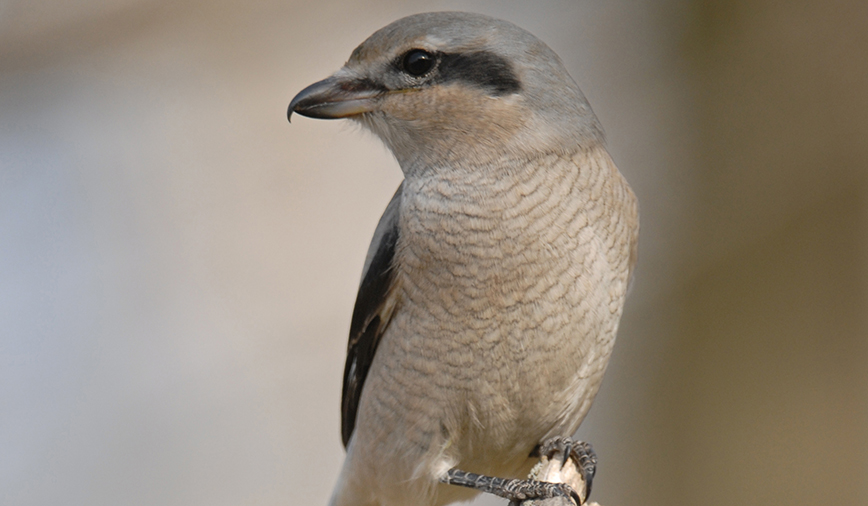Citizens of Kane, beware: There are butcher birds in our midst!
That’s right folks—Lanius excubitor has come to our fair land. But instead of running for cover, you might instead want to gear up and go outside. Grab your binoculars and maybe a camera, and head to a nearby natural area to try and catch a glimpse of this rare visitor from the north.
Lanius excubitor is the Latin name for the northern shrike, a bird virtually in a class by itself. Along with its cousins in the family Laniidae, it’s classified as a predatory songbird—a “Tweety with a ‘tude,” if you will. Though its voice is marginally musical, its talent for taking prey is exceptional. Yet you’d never tell by looking at it.
Unlike most of the true birds of prey, such as hawks and owls, northern shrikes are small, about the size of a chunky robin. They also have thin, spindly feet, designed for perching, instead of the powerful toes and razor-sharp talons possessed by raptors.
About the only clue to the shrike’s predatory nature is its bill, which has a distinct hook on the end. It is this bill, coupled with strong neck muscles, that make the shrike so good at what it does. With an efficient snip to the base of the skull, shrikes dispatch their prey (typically small rodents and birds in winter) in short order.
But now what? This small bird can’t gulp its prey down whole, like an owl does. And those weak feet make gripping and shredding difficult, so eating like a hawk is tough, too.
That’s where a unique adaptation—and the reason for that nickname “butcher bird”—comes into play. Shrikes will impale their prey on branches, thorns, even barbed wire, much like a butcher hangs his wares. The bird then does one of two things. If it’s hungry, it sets about the task of tearing into the meal. (Remember that scientific name, Lanius? It comes from the Latin lanio and means “I rend, I tear to pieces.”) If the bird is full, the prey is left hanging, perhaps for a short while, perhaps for good.
Scientists have lots of theories on why shrikes sometimes kill more than they can eat. It could be that the impaled prey animals are simply larders, a go-to stash for when times are lean. Impaled prey might also serve to indicate territories; show females which males will be the best providers; and/or help prey “age” and become easier to eat. No one really knows for sure.
One thing is certain—if you want to see a northern shrike, and you don’t want to travel to their summer breeding grounds in Alaska and northern Canada, now is the time. With a little luck, you just might see one of these handsome hunters.
I was just that fortunate last Friday. A group of us had gathered at Campton Hills Park in St. Charles to check out the area where the new environmental education center is to be built. (Thanks again, so much, to everyone who voted yes on the recent St. Charles Park District referendum!)
Truth be told, the northern shrike could’ve come and gone and I’d have been none the wiser; I frankly was more concerned with some slick ice and the very real possibility of falling tail over teakettle. But present among our merry band was Denis Kania, a park district coworker and expert birder. He’d noticed some movement among the trees and, after our outdoor meeting concluded, he headed to his truck for his ever-present binoculars and quickly confirmed the bird’s i.d.
Wanna see a shrike for yourself? Besides Campton Hills Park, the birds also have been spotted at Otter Creek Bend Wetland Park in St. Charles and Fermilab in Batavia, as well as points west. If you go out shrike-seeking, look for the same identifying marks Denis saw: a grayish bird with black wings and tail, as well as a black mask across the eyes. It likely will be bobbing its tail as it perches at the end of a branch, or on a post or wire, keeping close watch on its turf. (Okay, time for one more round of Latin. The species name, excubitor, means sentinel or watchman.)
Bona fortuna—er—good luck!
Pam Otto works for the St. Charles Park District and can be reached at potto@stcparks.org or 630-513-4346.

